After weeks and weeks of stressful “real life” work I at last found a Saturday to be spent in the shipyard at the Lake Mueritz, where my Omega 42 is being built. Apart from the fact that I haven´t seen the progress on the boats for almost two full months (!) now, it was a very emotional visit. It´s just making me so happy and calm. Everybody should get his own boat build, believe me, the best sedative from the oddness and all the vulgarity of life. Anyway …
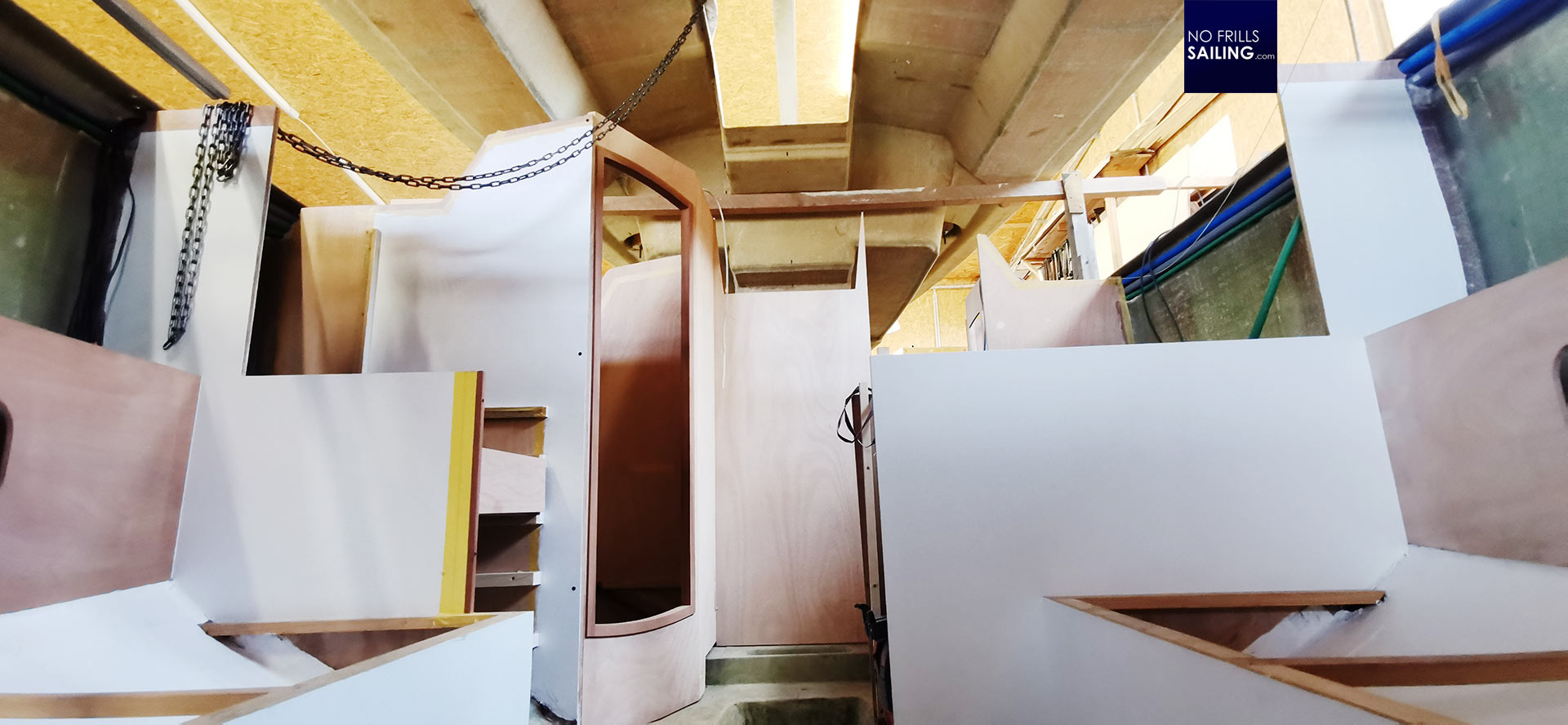
As I stood there inside the boat – still, every time I visit the yacht it excites me how freaking big she is! – I noticed a detail: The ladder. Or to say: The non-apparent ladder. I´ve had quite some discussions and exchanged a whole lot of ideas with Heiner, boss of the shipyard, of how we could realize the companionway for my Omega 42. And since this is one crucial element of the yacht, I thought, that´s a nice detail to write an article about. So, here we go.
A central and hugely important part of the boat
Why is this something worth excruciating my head? Well, the entryway and the ladder/stairs in particular is a central element of a boat´s interior. It´s the connection between the cockpit, the “up”, and the salon, the “down below”. I don´t know how many times during an average sailing session one is entering up and down, but I guess it´s a couple of dozen times. Per day. I am sure, the companionway is the most used single part within the boat, much more used than the toilet. So, one cannot overestimate the importance of it.
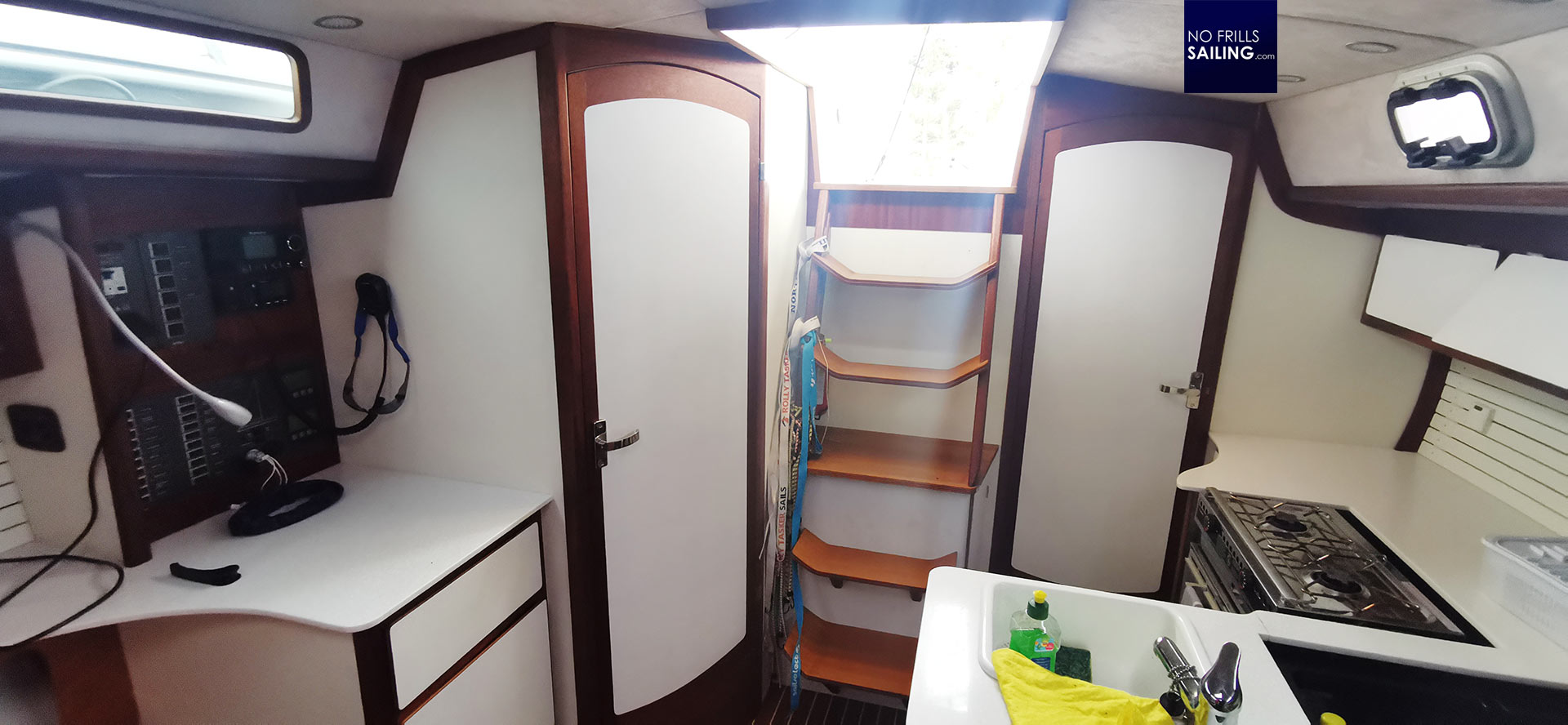
In my job as a boat dealer I know for sure from hundreds of boat visits and boat tours with clients and prospects that people interested in buying a yacht have a special interest in the companionway. It should be easy to use, not too steep and safe to utilize even in rough weather. So, for example, Beneteau has a motto: No companionway on an Oceanis should be steeper than 45 degrees! It´s also important that, when going up or down, some grab handles are apparent so that anyone going up or down can have a safe grip. Looking at the steep bare bulkhead in my Omega 42, it becomes clear what a task this really is.
Boat entryway ladder: Scratch built?
First of all: We don´t have to invent the wheel over and over again. So I was doing a bot of research if there are steps for boat companionways available. That was because I didn´t wanted to come up with completely scratch built steps, which according to my restricted budget would certainly have been ungraceful and unsophisticated … well, planks. And I found some: The steps of Bavaria Yachts. You can buy them right away. And I did.
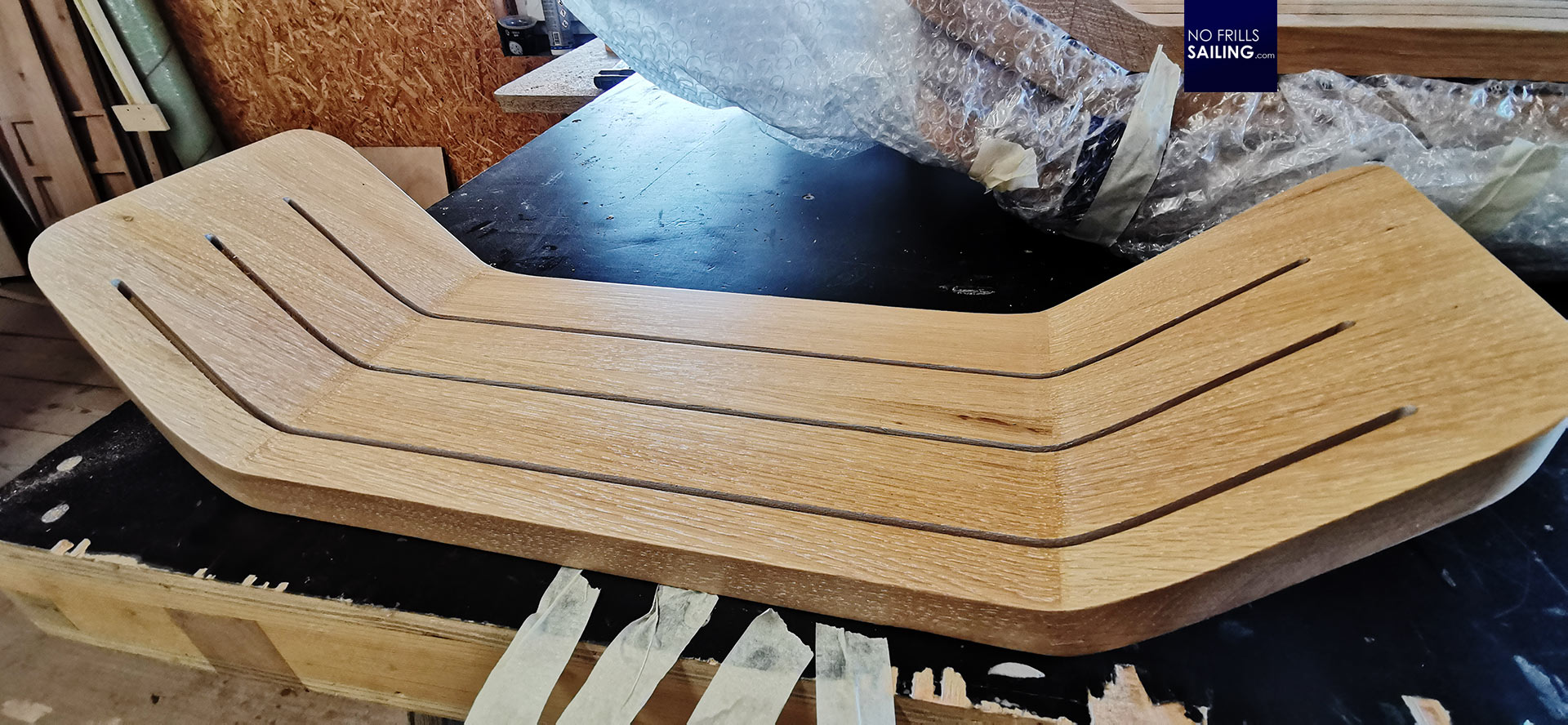
The steps, five of them, arrived a couple of days later. You may have read my article about the great finishing and heavy material quality of Bavaria Yachts especially when it comes to the joinery, and here´s another proof of that. The steps are made of massive wonderfully form-fit glued white Oak with some milled anti-skid rills. I really like those!
A simple yet beautiful solution for the Omega 42
One half of the thing is set, but how should the entryway ladder be looking like? Above you have seen how they realized this on hull #001 WINDFAENGER. This is a solution I don´t want to have for some reasons. First, in this version the ladder has only two steps and is sitting on top of an extra cupboard. This may provide for some additional stowage but I´d like to keep ALPHA as open and lofty as possible. Secondly, my most beloved boatbuilding brand Oyster funnily published a nice concept of their new entryway ladder, which I really liked:
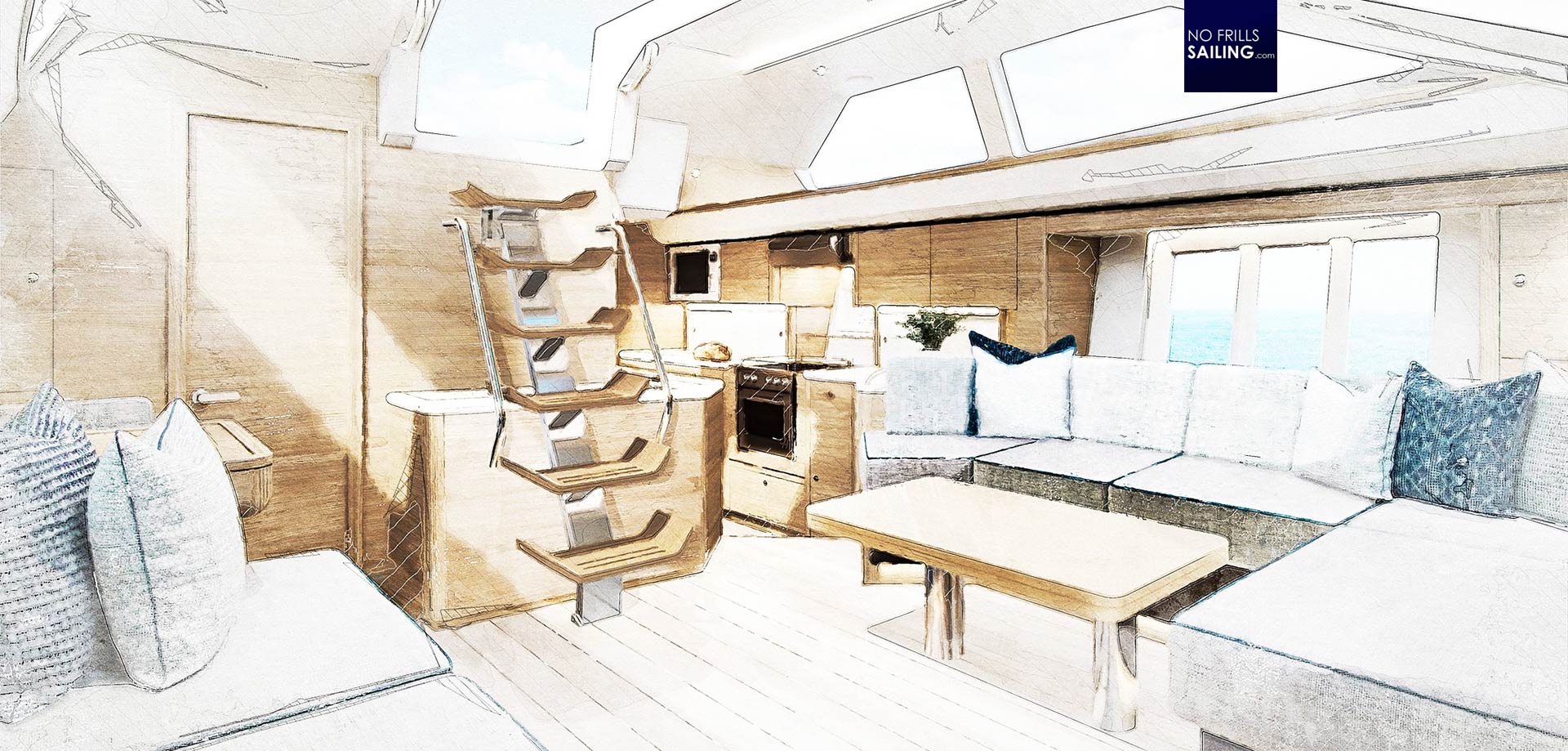
It´s basically a single chrome plated steel spine onto which the steps are fitted. The spine is nice and wide, making the steps “float” in the air. Apart from the fact that underneath the stairs Oyster did fit some stowage too, I really loved this idea. Heiner, boss of Mueritz Bootsservice, the shipyard that builds the Omega evo, nodded and agreed: It´s an elegant, modern yet very “discreet” solution. Nevertheless, for guaranteeing a dead-certain stability when using the ladder (and also for heavier people standing on the edges of the steps when heeling), he slightly changed the single central-spine concept a bit …
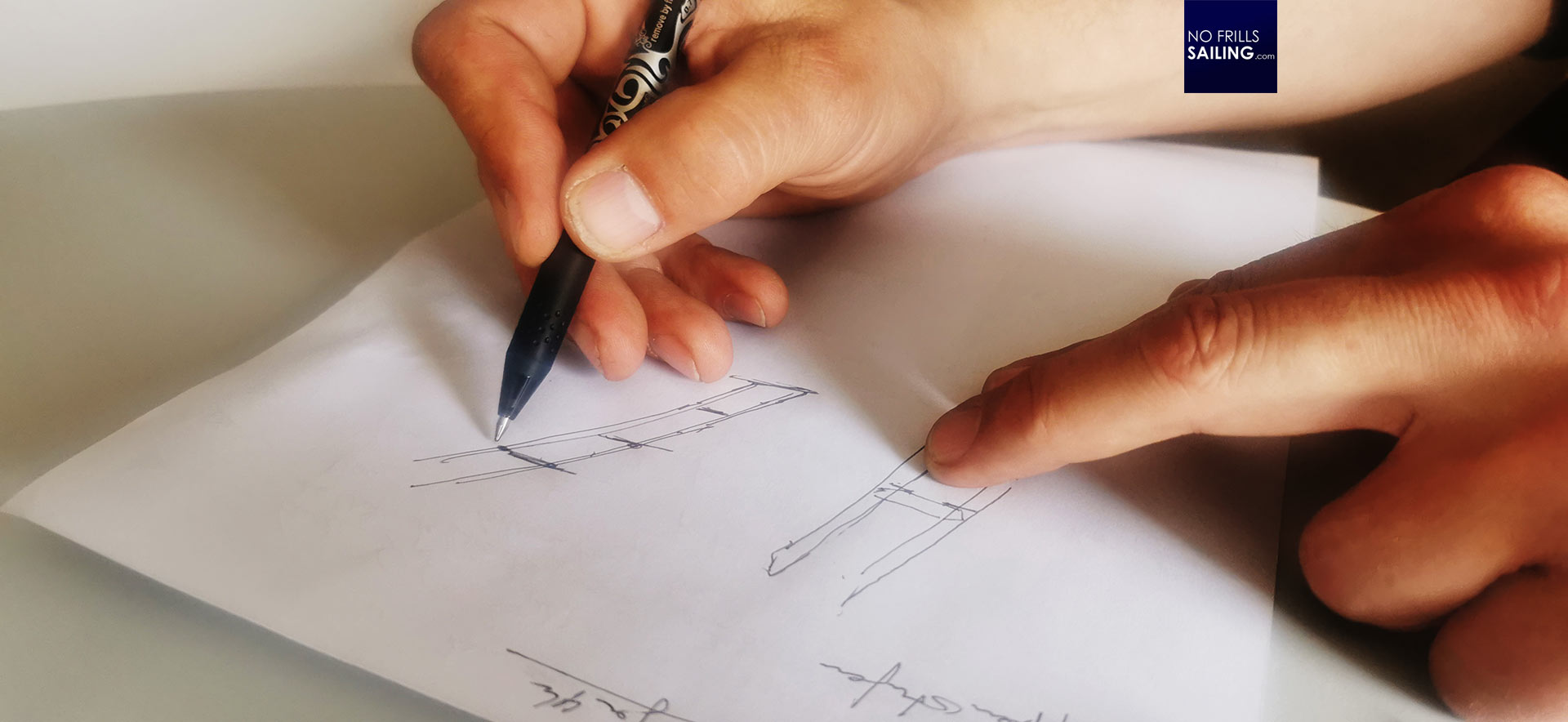
We produce a quick sketch. The idea is to use double VA4-tubes to either side of the steps. This is made so that each step will have four mounting attachments to sit firmly in between. As Heiner puts it, the forces will be met much better when taken out of the steps to the ends rather than have a central spine and pivoting forces when somebody stands at the outside of the steps. Another nice effect: Those tubes simultaneously function as a handrail for a safe grip. Elegant, easy and simple.
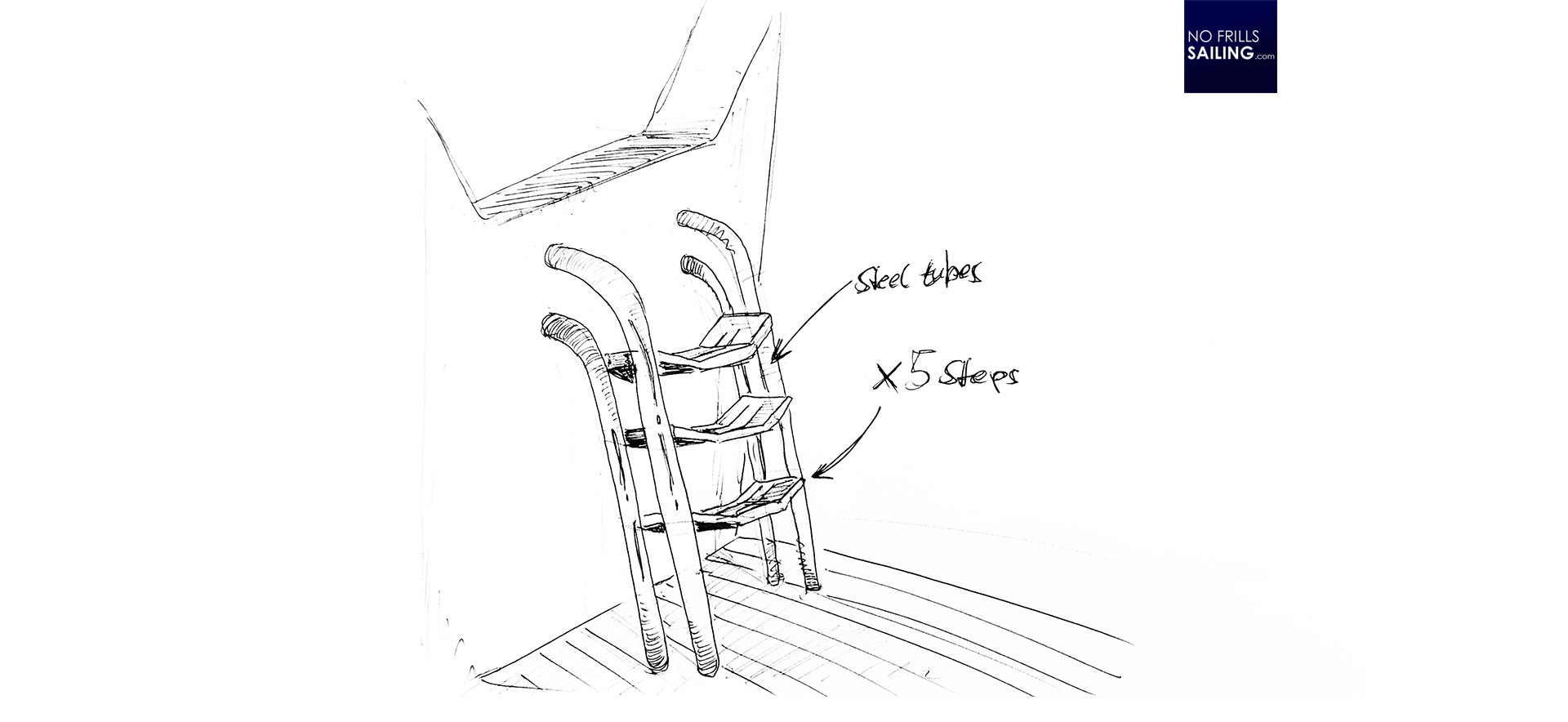
Naturally, we will have a much steeper angle than in modern production boats. This is due to the interior layout of the boat. The ladder cannot be taken too far into the boat (to lower the steepness) because it would block the entry into the bathroom and the transit into the galley/pilot´s berth. By this, we safe a lot of volume inside, I´m perfectly fine with a steeper ladder. Later, at home, I make a more elaborate sketch (yeah, it´s a bit clumsy, but more in detail) to think about this idea:
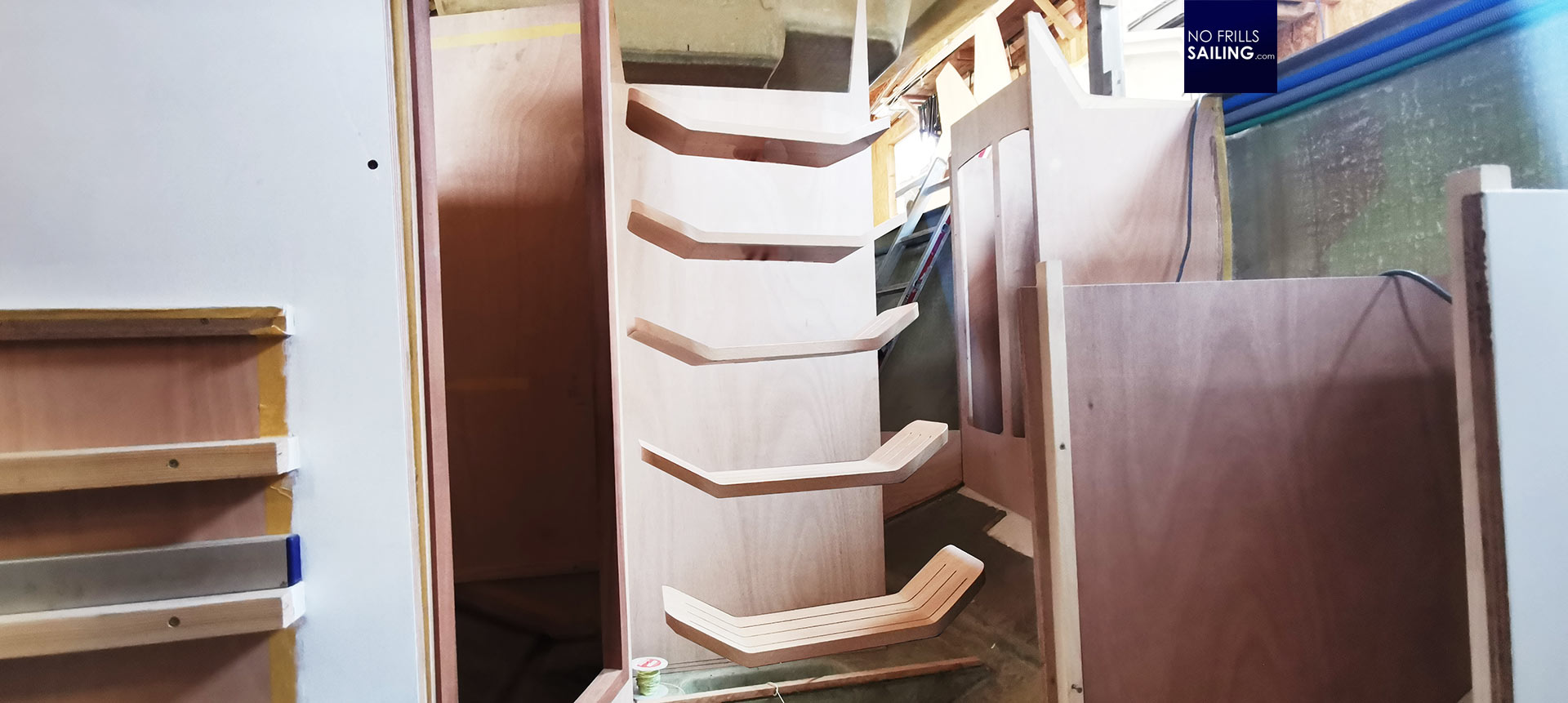
I guess I like it. Although, Oyster has the best solution … but hey, this isn´t an Oyster. Back aboard, I kneel down and check how the steps could be arranged. Yepp, it for sure will be a steep entryway, but my kids are used to boats and simply love climbing, guests aboard will have to accommodate. In the end, the Omega 42 is a boat from the Seventies, boats were made to sail these days …
Creating additional stowage?
But one thing began gnawing in my mind: The space underneath the entryway ladder is indeed a wasted. I mean, I certainly don´t want a heavy cabinet there but it is too much of a tempting location for stuff. Maybe one of two shelves would be cool there? To put away al the little things you need up on deck but also want them stored away: Like the binoculars, sailing gloves, sunscreen, sunglasses? Also, this might be a great place for safety equipment like the fire extinguisher and such. Certainly, this is something I will think about soon.
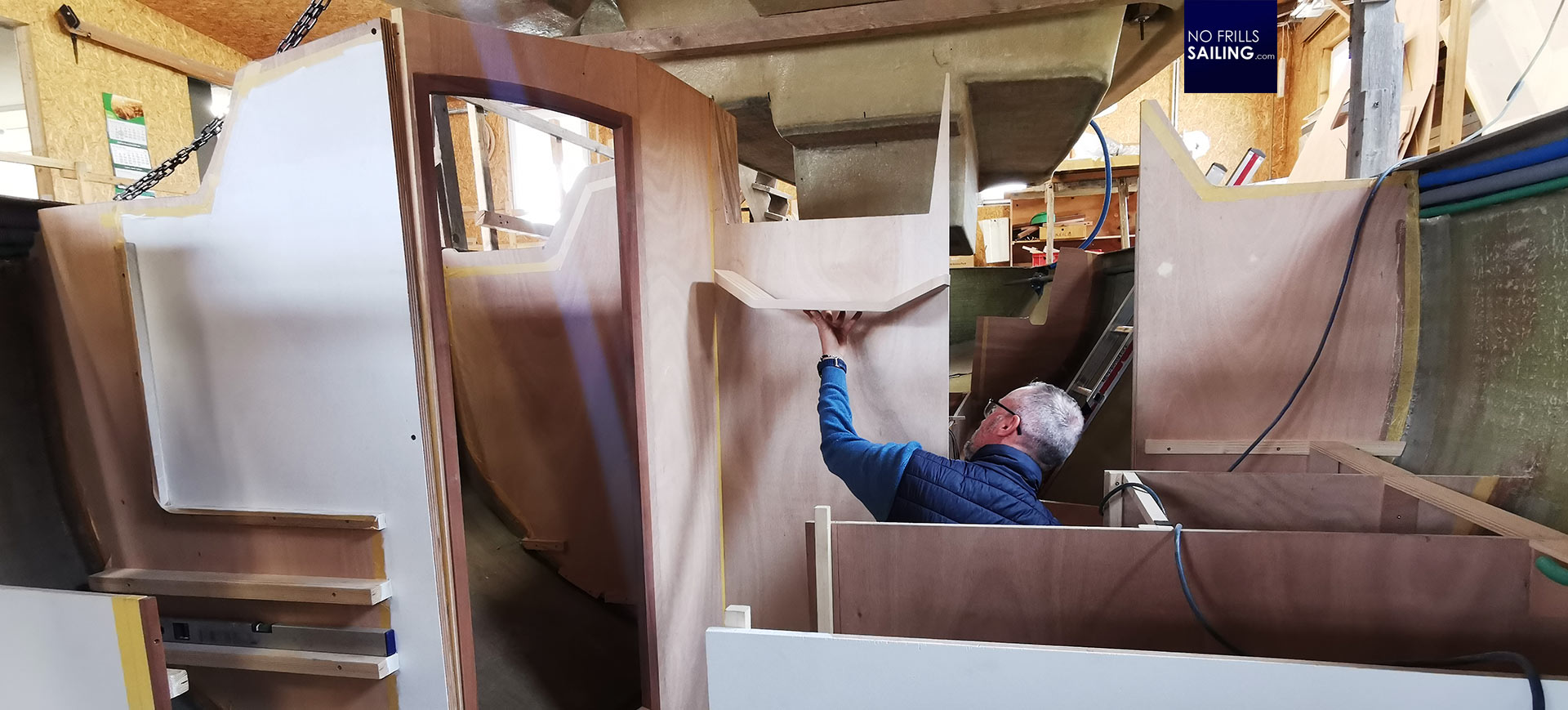
For the time being I am really happy to having (almost) solved this big question and I am excited to see how Heiner and his crew will turn these sketches into reality. We discussed the next open details, like the material of the countertop, mini nav-station and salon dinner table and the deck hatches and windows, which will be the upcoming production steps. But this is another article. For now, I am happy that in my Omega 42 some very nice German Oak steps will make sure that transiting up and down is safe – and in style.
You might also find interesting:
The concept for refitting the fore cabin
This should be a perfect chart table
Hallberg-Rassy´s marvelous Captain´s Chairs for my boat
